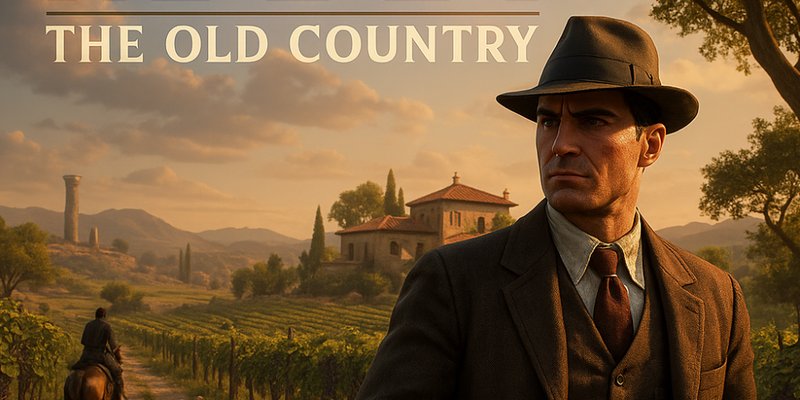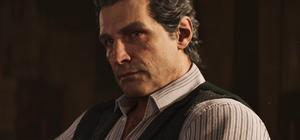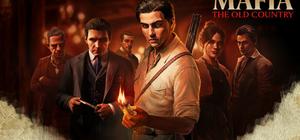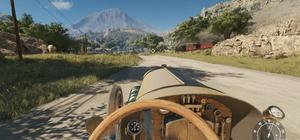Mafia is back, but not in the way you might expect. Mafia: The Old Country just dropped a few days ago, and instead of the usual 1930s American city, we’re headed to the mafia’s birthplace - Sicily, circa 1900. Think of it like the Godfather Part II flashbacks brought to life, with you in the driver’s seat (or sometimes on horseback). This game is a prequel to the Mafia series, set in a time when carrying a stiletto knife was as important as carrying cash, and “going to the mattresses” might literally mean sleeping in a barn. Hangar 13 (the devs behind Mafia III and the Mafia remake) have served up a focused, story-driven experience here. The question is: is it an offer you can’t refuse, or one you can? Let’s decode what The Old Country is all about.
Setting the Stage in 1900s Sicily (Story & World)
The game puts you in the well-worn shoes of Enzo Favara, an indentured sulfur mine laborer turned aspiring mobster. Enzo’s story is basically a rags-to-riches (or rags-to-mafioso) tale set in the fictional Sicilian town of San Celeste. After a brutal childhood of forced labor, Enzo sees the mafia as his ticket out - think of it as climbing the corporate ladder, except the corporation is a crime family. He swears loyalty to Don Torrisi’s crime family, and the game follows his rise from lowly outsider to trusted soldato to, potentially, something more. It’s an origin story for the Mafia franchise, exploring how organized crime took root in old-country Sicily before it ever crossed the Atlantic.
This isn’t just a glamorized gangster story; it has a bit of a historical and social twist. The narrative highlights why someone like Enzo would turn to a life of crime. Poverty, exploitation, and limited options form the backdrop. One review noted that The Old Country “asks you to understand the societal forces” that drive Enzo’s choices. In other words, when life hits hard times - like early 20th-century Sicily where folks are scraping by - the mafia starts looking less like pure evil and more like a desperate opportunity. Don’t get it wrong: the game isn’t justifying crime so much as showing what lights the fuse. It’s a bit of a sobering take that adds depth to the usual mob drama.
Of course, you still get plenty of classic mafia vibes: oaths of loyalty, family honor, betrayal, and vendettas that span decades. The writers lean into the genre’s tropes (there’s definitely some “offer-you-can’t-refuse” energy here), but they also strive for authenticity. The dialogue is peppered with Sicilian slang, and you’ll meet a cast of unpredictable allies and cutthroat enemies as colorful as a Scorsese flick. Several critics praised the strong character performances and writing - the cast really sells the drama. IGN’s reviewer even said the game has “great writing, excellent vocal performances,” making it an engaging mob drama that doubles as a time machine to a rarely explored era. In short, if you’ve ever wanted to play through a classic mob movie, this story delivers on that atmosphere.
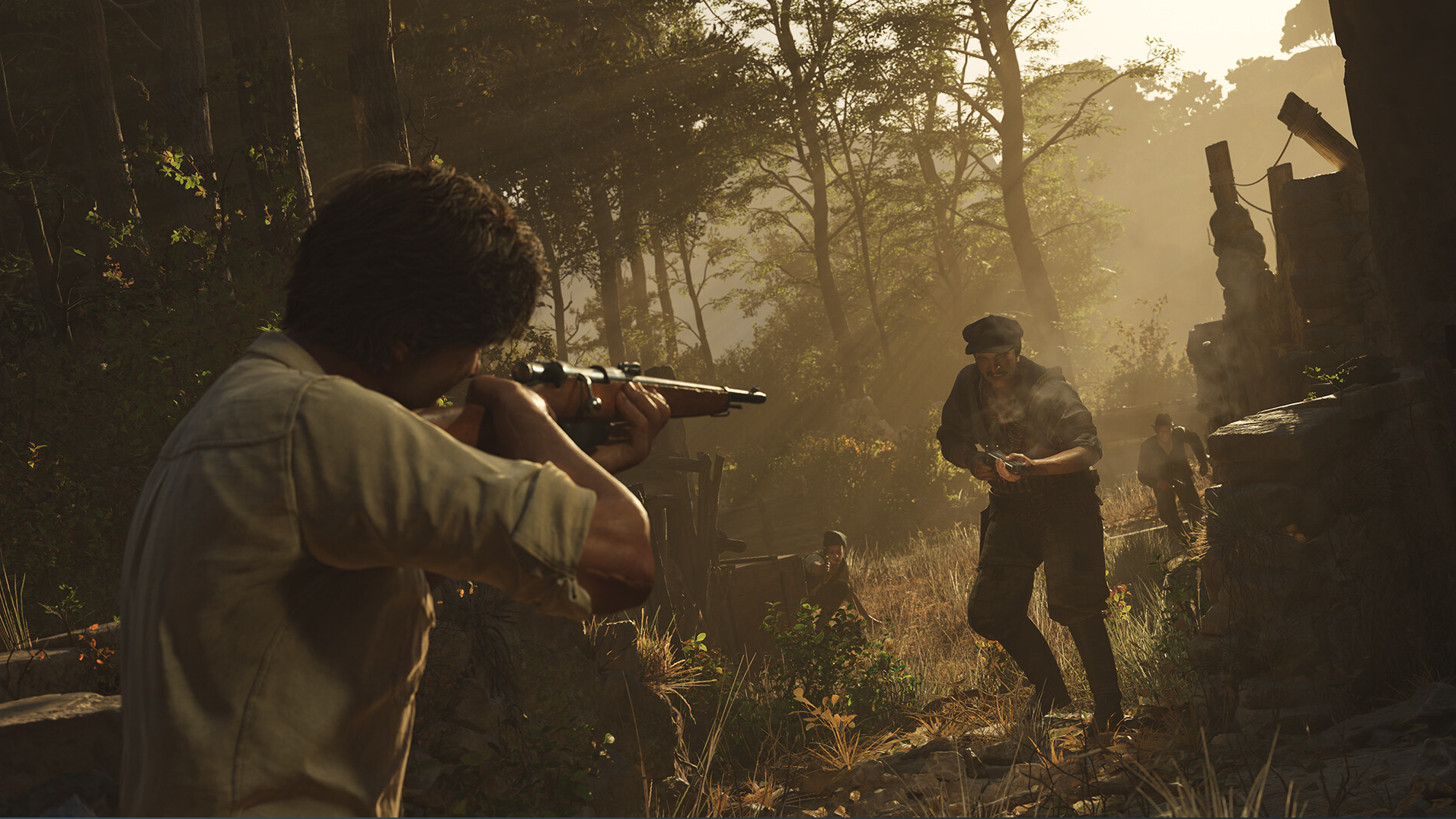
Gameplay: Guns, Knives, and Horsepower
So what do you actually do in The Old Country? In broad strokes, this is a third-person action-adventure where you’ll be doing a bit of everything a mobster-in-training would do: shooting, sneaking, slugging, and driving - plus the occasional horseback ride. Hangar 13 has explicitly ditched the modern open-world format in favor of a more controlled, chapter-based approach. Each mission is like a scene from a film: tightly directed, often cinematic, and usually linear in how it plays out.
You can expect gunfights with period-authentic weapons - we’re talking lupara sawed-off shotguns and old-school revolvers instead of AK-47s. Combat will feel familiar if you’ve played any cover-based shooter: you take cover, pop out and shoot, then move up. It’s solid but a bit old-school; don’t expect revolutionary mechanics here. As one reviewer noted, “there’s nothing especially remarkable about its typical third-person cover shooting” - it gets the job done without reinventing the wheel. The gunplay has been called simplistic by some critics, so it’s more about the pew-pew fun of the moment than about complex strategy or RPG-style skill trees. In true Mafia style, a couple of well-placed shots will drop an enemy, and so will a well-timed haymaker or knife to the ribs.
Stealth is another ingredient in the gameplay mix. At times, the game asks you to put away the shotgun and play it quiet - sneaking through an area for a stealth takedown or to avoid a larger firefight. These parts can be tense, but heads-up: the stealth implementation is a bit old-fashioned (in the not-so-good way). Instant-fail stealth segments make an appearance - you know, the kind where if you’re spotted, it’s mission over and back to the last checkpoint. In one mission, Enzo has to infiltrate a government building to crack a safe, and if a guard catches you, boom, you’re kicked back outside to start all over. That can be frustrating, especially since many times even if you do sneak perfectly, the game might throw you into a gunfight afterward anyway. It’s a bit like playing hide-and-seek where getting caught means restarting the whole game of tag - not exactly modern design. If you have flashbacks of early 2000s stealth missions, you’re not alone. Some players won’t mind the challenge, but others will find this design choice inconvenient to frustrating.
On the brighter side, the missions try to keep things varied. One moment you’re in a shootout in a narrow Sicilian alley, shotgunning rival thugs; the next you might be silently creeping through a moonlit vineyard to eavesdrop on a deal, or engaging in a high-speed chase in a rickety Model T-era car. Yes, vehicles are here - vintage cars that handle like the early 1900s machines they are, and even horseback riding for when engines aren’t your style. Don’t expect Forza-level driving; think more along the lines of the classic Mafia games where cars are heavy, a bit clunky, but authentic to their time. In fact, galloping on a horse through cobbled streets can feel surprisingly refreshing in a Mafia title (who knew Red Dead Redemption would cross over with Mafia, however briefly?). It’s all very cinematic - car chases involve exchanged gunfire and scripted thrills rather than free-form sandbox mayhem. This variety in gameplay - from stealthy knifings to roaring shootouts - keeps the 12-hour campaign from getting dull, and the pacing has been praised as tight and engaging.
Just don’t go in expecting a Mafia sandbox to cause mayhem outside of the story. Remember, The Old Country is linear at its core. You’re not doing side quests to deliver pizzas or find 100 hidden doodads in the city. The focus is firmly on Enzo’s rise and the missions that tell that story. If you try to wander off-script, you’ll hit invisible walls or be gently herded back to the task at hand. It’s very much a “on-rails” gangster experience - like an interactive Netflix miniseries where you occasionally pull the trigger.
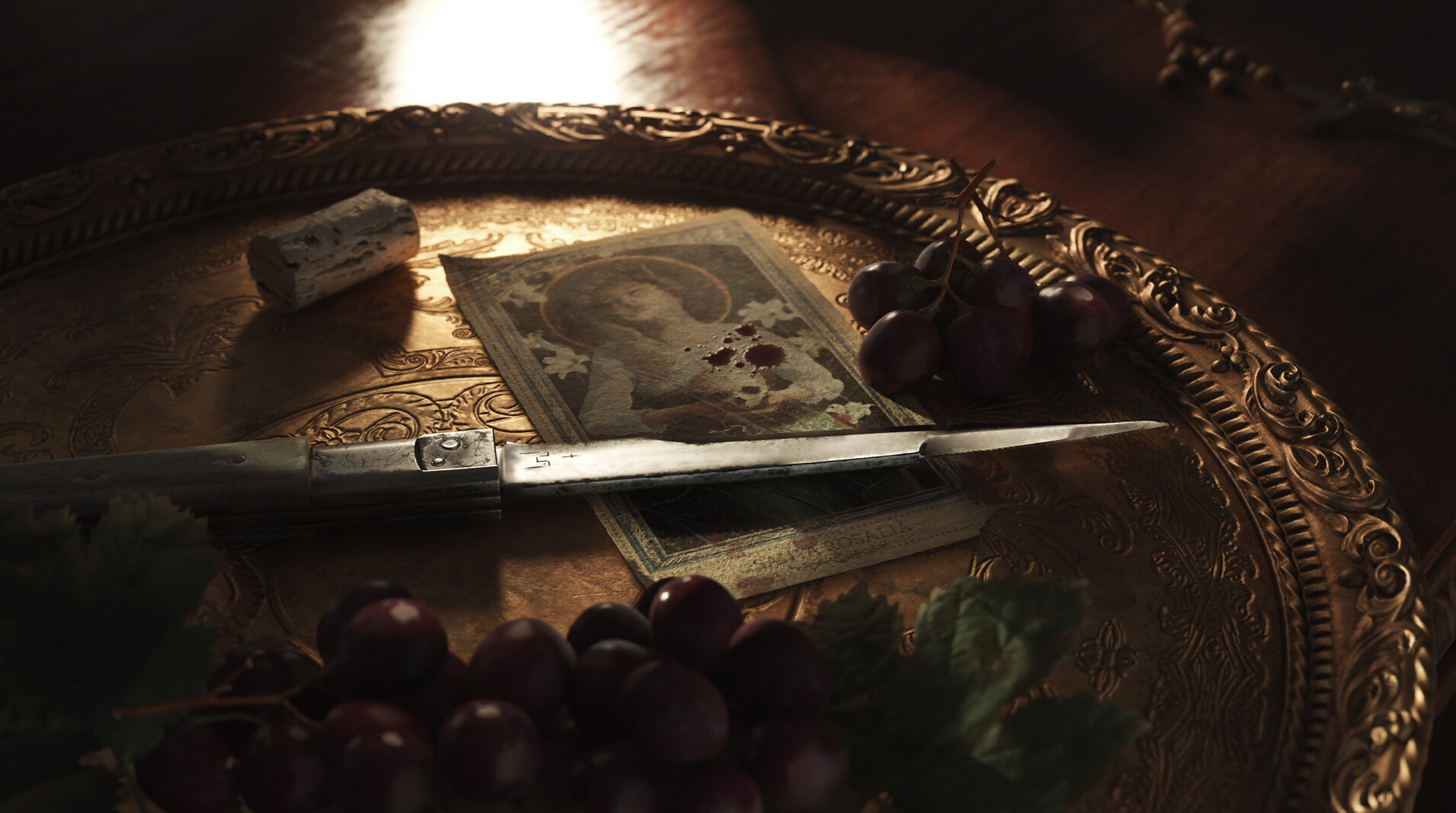
Presentation & Atmosphere: A Trip Back in Time
Where The Old Country truly shines is in its atmosphere and world-building. This game is dripping with early 20th-century Sicilian flavor. The developers built it on Unreal Engine 5 (a series first) to bring this era to life with impressive detail. And boy, did they succeed: from sun-baked rural landscapes to cramped stone streets, the world looks stunningly authentic. One moment you’re standing in a lush vineyard under the Mediterranean sun, and you can almost smell the grapes and dusty earth. The next, you might be walking through ancient Roman ruins or candle-lit crypts that give off major gothic vibes. The environment art sets a tone that’s distinct from the American cityscapes of past Mafia games - it’s more Pastoral meets Gothic meets Mobster. Critics have called the character models and environments “stunning to look at”, and it shows. This is the kind of game where you might stop just to gawk at the sunset over a Sicilian hillside or the intricate architecture of a centuries-old church.
The attention to detail is everywhere. NPCs (the non-player characters) go about their lives in the background - vineyard workers picking grapes, villagers chatting in Italian at the market, maids gossiping in the mansion kitchen. These little ambient scenes make the world feel alive and believable. In fact, your home base for much of the game is the Torrisi family estate, complete with a sprawling vineyard, and it’s bustling with activity: cars and horse carts come and go, staff hustle about their chores, and you overhear snatches of conversation that ground you in the day-to-day life of the era. The New York Times, of all outlets, praised how walking slowly through these spaces is often more rewarding than sprinting, because you soak in all the postcard-worthy sights and sounds. This is a game that wants you to stop and smell the sun-dried tomatoes - literally, IGN remarked you can practically smell them, thanks to the rich atmosphere!
Audio plays a big part too. The voice acting, as mentioned, is top-notch - characters speak with thick Sicilian accents (sometimes in Sicilian dialect with English subtitles) and really sell the drama. The soundtrack and sound design haven’t been talked about as much in reviews, but there’s a good mix of haunting Italian folk music and tense orchestral scores when things heat up. You’ll hear church bells in the distance, the clip-clop of horse hooves on cobblestone, and the echo of gunshots in narrow streets. All these touches combine to transport you to another time and place. If Mafia III brought 1968 New Bordeaux (a fictional New Orleans) to life with its soundtrack and vibe, The Old Country does something similar for 1905 Sicily, albeit with a very different cultural palette.
One thing to note: performance and polish. Since the game just released, we mostly have PC impressions and a promise of a console patch for enhanced performance modes. On a decent PC, the game runs smoothly, and the developers are targeting a solid 60fps on consoles in performance mode. Early reports mention a few stability issues and bugs here and there - nothing catastrophic, but the kind of minor jank you’d expect (maybe a buggy NPC or a finicky cover system moment). Overall, though, no reviewer has flagged any serious technical showstoppers. It’s not a cyberpunk situation; it’s a mostly polished experience, with perhaps a patch or two needed to iron out the usual release wrinkles. Considering the ambitious visuals, it’s commendable that the game is in good shape out of the gate.
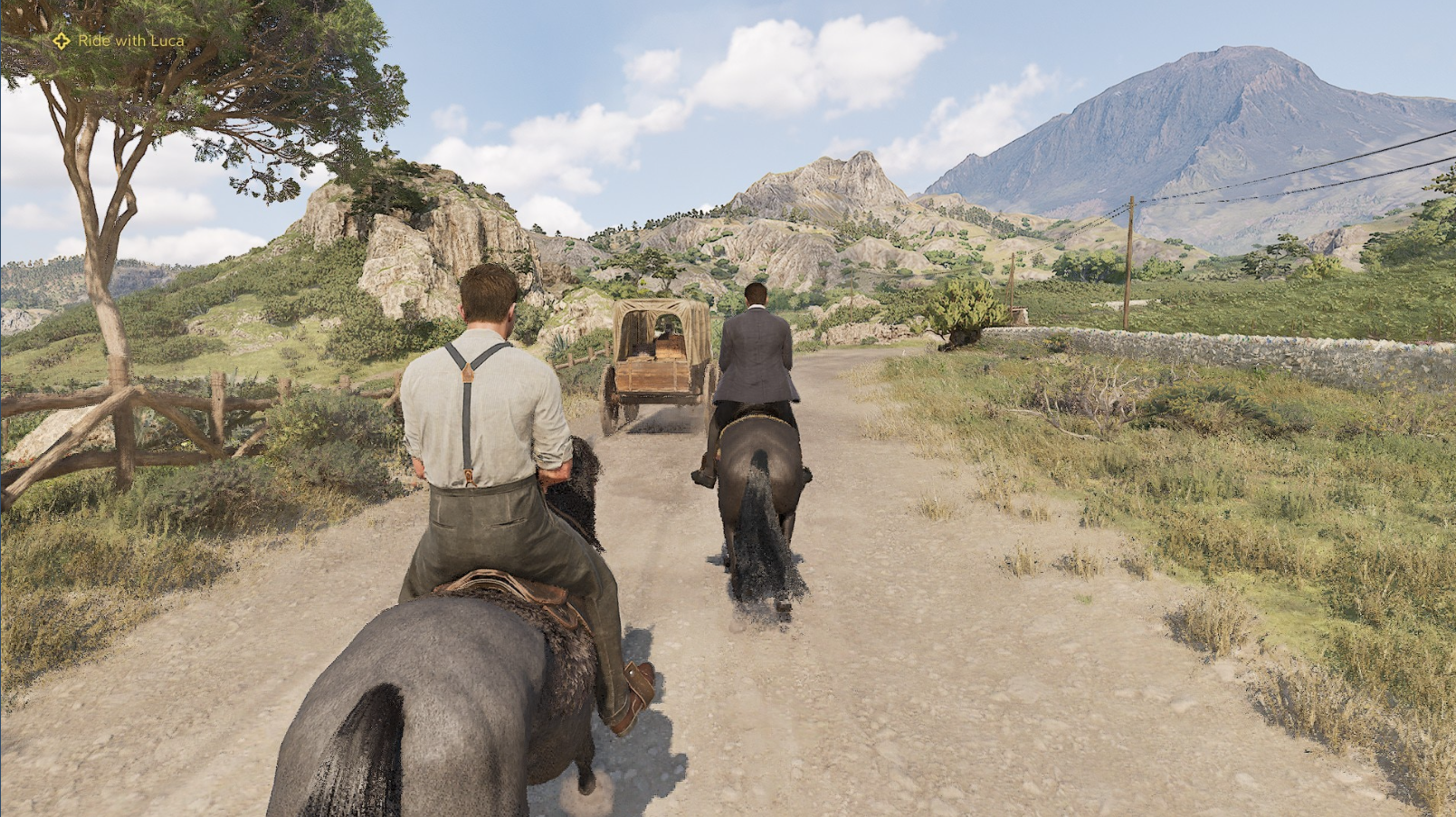
Focus Over Freedom: A Linear Adventure in a Sandbox World
It’s 2025, and most big games these days throw you into massive open worlds with endless to-do lists. Mafia: The Old Country boldly does the opposite: it’s proudly linear and compact. The whole campaign is around 12-14 hours long - basically a weekend binge if you’re dedicated. And it doesn’t pad that with collectibles or repetitive side missions. This design choice has some interesting implications.
On one hand, it means tighter storytelling. The game doesn’t waste your time; every mission pushes the narrative forward. There’s a clear beginning, middle, and end to Enzo’s journey, and you won’t be distracted by fetch quests about helping some rando fix their wagon wheel. Hangar 13’s president even said they wanted a story you could enjoy without a “massive time commitment”. It’s like the team saying: “We know you have a life - here’s a great mob tale that you can actually finish before your next birthday.” In an era of 100-hour RPG epics, this approach feels refreshing. PCGamesN praised this confidence in a focused vision, noting that the game “knows what it wants to do and rarely deviates from offering just that,” avoiding the bloat and filler of so many big-budget titles. If you value quality over quantity, The Old Country definitely leans that way.
On the other hand, if you love open-world freedom, you might feel a bit confined. The world of Sicily here is beautifully crafted but mostly just a backdrop. You can’t just drive off into the hills and make your own fun between missions - there’s no cruising around looking for trouble like in Grand Theft Auto. In fact, VideoGamesChronicle pointed out that the Sicily map feels “sorely underused” - it’s so well-made that you want to explore more, but the game doesn’t really let you. It’s a fair critique: you get these awesome vistas and detailed streets, yet you’re usually on a set path through them. Imagine visiting an amazing museum but only being allowed on the guided tour - you might itch to stray off and look at that one cool exhibit in the corner, but the ropes keep you on track. That’s The Old Country in a nutshell.
The linear design also means replayability isn’t the selling point here. Once you know the story, there’s not a ton of reason to replay immediately, unless you just want to relive the adventure or try a harder difficulty. There are no branching story paths or alternate endings - the game’s more about witnessing a contained story unfold. So if you’re the type who buys games to play them over and over or muck about in an open world, adjust your expectations accordingly.
One big upside: the game comes at a budget-friendly price - it launched at $49.99 instead of the $70 many AAA games ask for these days. That’s a nod to its shorter length. It’s almost like paying for a season of a high-quality TV show rather than an entire multi-season box set. For roughly 12 hours of well-produced content, the price feels fair. And because it’s not a live-service or open-world game, you’re not expected to drop extra cash on microtransactions or DLC just to get a complete experience (at least as of now). You buy the game, you get the whole story. Finito. ✅
What’s Great about The Old Country (Pros)
-
Authentic Atmosphere & Setting: The early 1900s Sicilian backdrop is unique and immersive. The game world is richly detailed and feels alive - from pastoral countryside to bustling villa estates - truly “beautiful and authentic” to the era. If you love historical settings or classic mob films, this will scratch that itch.
-
Strong Story & Characters: Enzo’s tale of loyalty and ambition is engaging, boosted by great writing and voice acting. It balances mob drama thrills with some thoughtful commentary on why people get drawn into crime. It’s like a good mafia movie that you get to play, complete with memorable, well-acted characters (no cardboard cutouts here - even side characters leave an impression).
-
Focused, Tight Experience: No bloated open-world or filler content. The linear design means pacing stays sharp - each mission brings something new, and the story doesn’t meander. At ~12 hours, it’s a refreshing, manageable game that respects your time while still delivering excitement and drama.
-
Varied Gameplay Mix: You get a bit of everything - intense gunfights, stealthy infiltrations, hand-to-hand brawls, car chases and even horseback getaways. The gameplay may be familiar in style, but the variety of scenarios keeps it fun. One moment you’re in a bar fight with brass knuckles, next you’re racing a vintage car under a hail of bullets. It keeps you on your toes.
-
Great Presentation: Built on Unreal Engine 5, the game looks fantastic. Character models, lighting, and especially the environments are top-notch. The sound design and music pull you into the world - you can hear the old country in every church bell and mandolin strum. It runs solidly on PC (and aims for 60fps on consoles) with only minor bugs noted so far, so it’s technically a smooth ride.
What’s Not So Great (Cons)
-
Dated Gameplay Elements: While competent, the core gameplay doesn’t innovate. It’s a conventional third-person shooter on the surface. Cover shooting and basic stealth dominate; if you were hoping for modern twists or deep mechanics, you might be underwhelmed. Some stealth sections, in particular, feel old-school in a frustrating way (instant fail states and checkpoint hiccups).
-
Strict Linear Structure: Freedom is limited. The gorgeous world is mostly a backdrop, and you can’t explore at will. Once a mission is done, you’re moving on. This might leave open-world fans wishing they could roam Sicily and find side activities - but the game just isn’t built for sandbox play. It’s “point A to B” and that’s it.
-
Short Length & Replay Value: ~12 hours of story might feel too short for some, especially if you’re used to 50+ hour epics. There’s little in terms of side missions or divergent paths, so the replayability is low. If you’re the type who buys one game to last you a month, this might only last a long weekend.
-
Familiar Mob Story Tropes: The narrative, while well told, doesn’t completely escape mafia genre clichés. You’ll probably see a betrayal coming, and guess some story beats before they happen. One reviewer noted it’s “nothing you haven’t seen elsewhere… and probably done better” in some cases. So if you were looking for a bold new spin on organized crime stories, this sticks fairly close to the known formulas.
-
Underused Potential in World: Related to the linear design, some players/critics feel that the game’s world and systems had more potential. For example, the stunning Sicily setting could have hosted more gameplay if it were a bit open. There are moments where you wish you could interact more with the environment or do dynamic activities, but The Old Country stays laser-focused on scripted missions. It’s a trade-off: polish and focus over breadth, which not everyone will agree with.
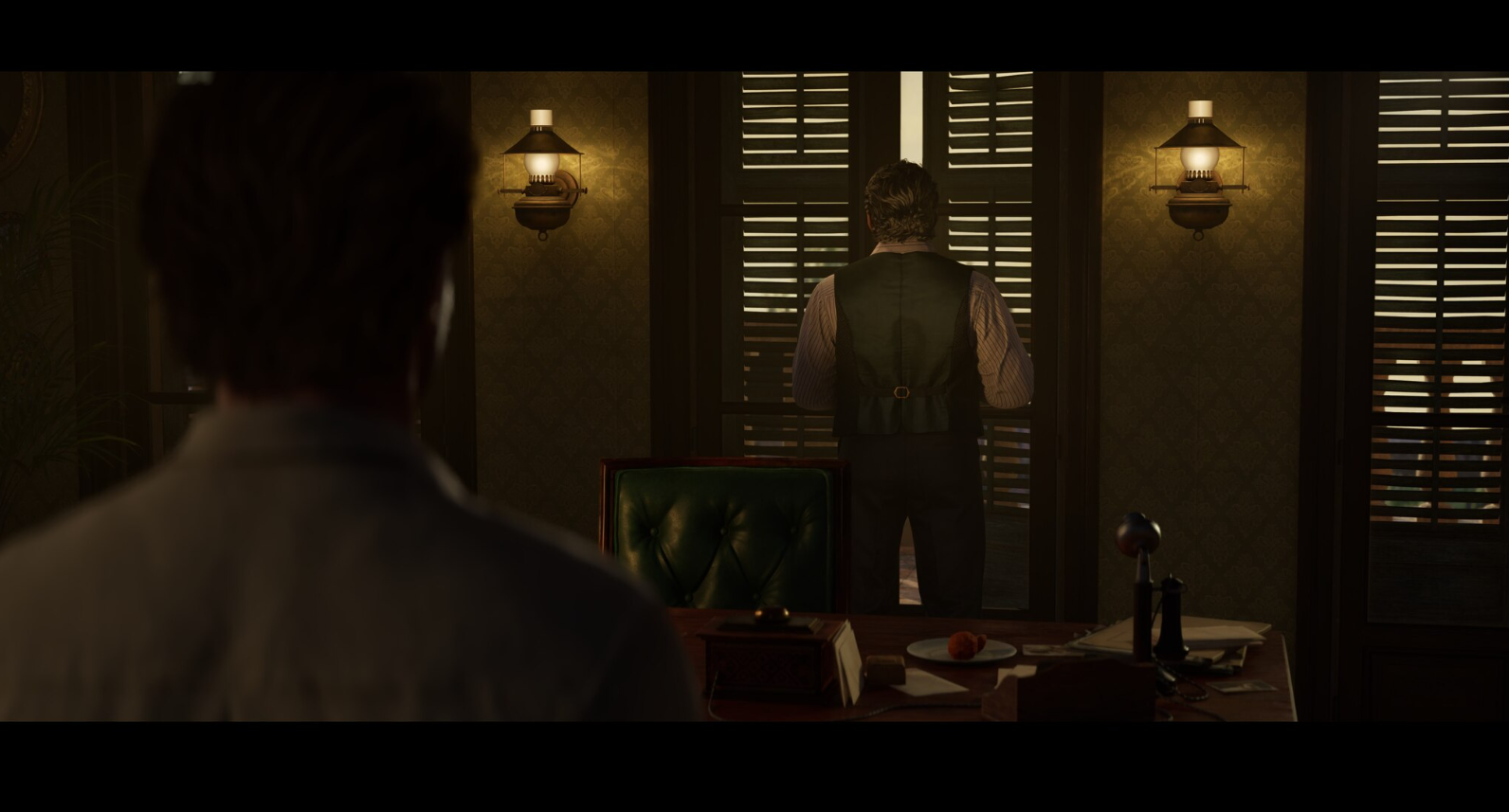
Final Verdict
Mafia: The Old Country is like a finely aged Sicilian wine - rich in flavor, but not a bottomless bottle. It offers a beautifully crafted, story-heavy experience that’s a welcome throwback to the more linear games of the early 2000s (fitting, since it harkens back to the original Mafia’s spirit). For fans of narrative-driven games and crime dramas, this is an easy recommendation. You get a believable world, a compelling if classic mafia story, and gameplay that, while a bit traditional, serves the tale well enough. As one reviewer put it, “part mob drama and part Western,” The Old Country is a moody, engaging ride that makes great use of an uncommon setting - you can practically feel the Sicilian sun on your face and smell the gunpowder (and tomatoes) in the air.
That said, if you were hoping for the next open-world extravaganza or a revolutionary leap for the series, temper your expectations. This game plays it a bit safe; it doesn’t try to one-up GTA or reinvent the wheel. Instead, it delivers exactly what it promises: a focused mafia tale with high production values. In an industry where many games suffer from bloat and feature creep, The Old Country’s restraint is almost bold. It’s confidently “good enough”, which in this case is not a backhanded compliment - it’s a recognition that the game set out with a clear goal and hit it. As the reviews indicate, it’s sitting around a respectable 75/100 on Metacritic (solidly in the “good but not great” camp).
Bottom line: Mafia: The Old Country is an offer many genre fans won’t want to refuse. It’s a shorter, polished adventure that trades the wide-open chaos of some modern games for a tight narrative and a strong sense of time and place. If you crave a cinematic mob experience and appreciate a game that respects your time, give Enzo’s journey a go. Just holster those expectations for groundbreaking gameplay, and enjoy it for what it is - a bloody trip through the old country that knows exactly what it wants to be. In the end, that focus is its greatest strength, making Mafia: The Old Country a memorable if not earth-shattering chapter in this storied franchise.
